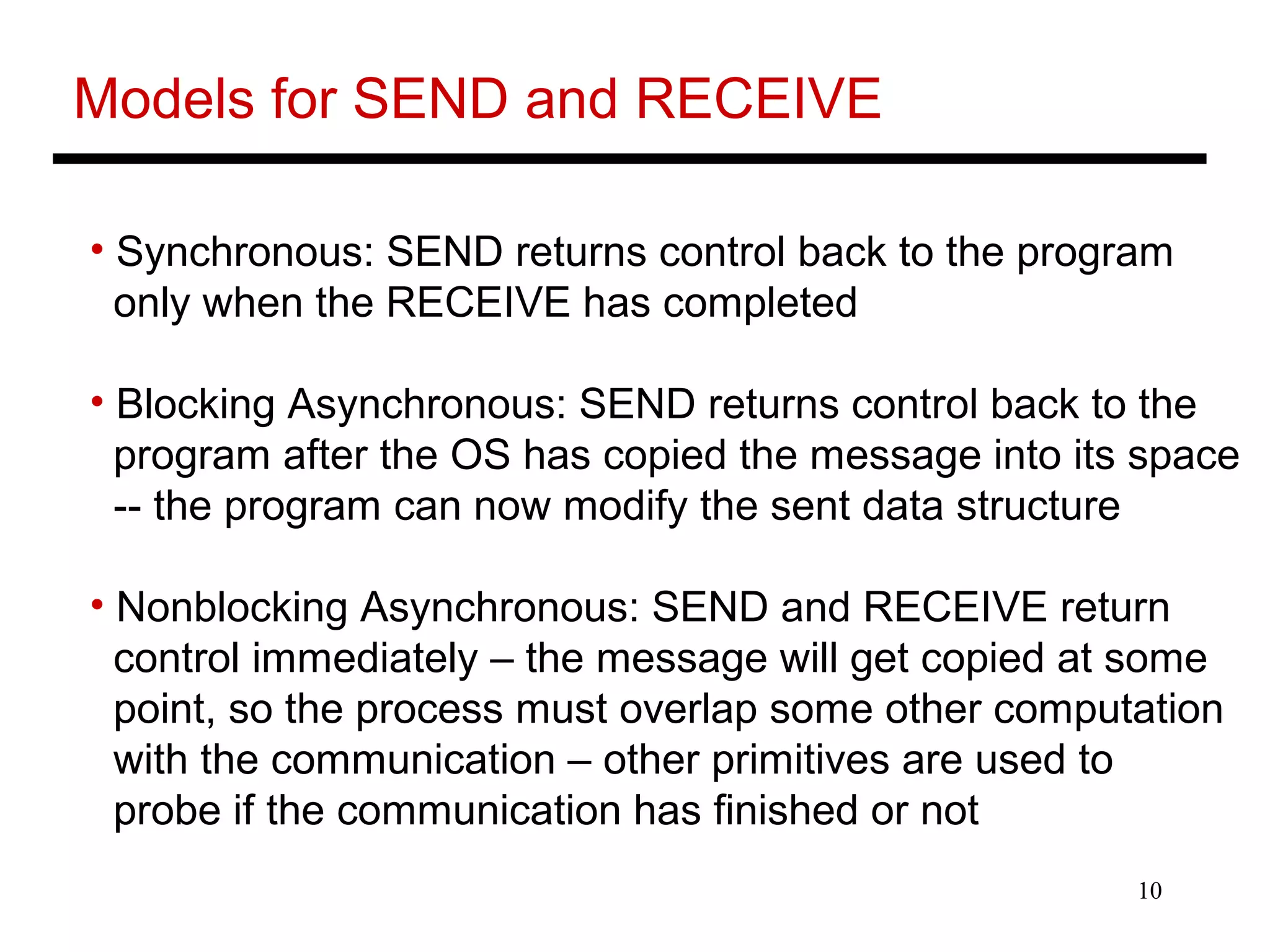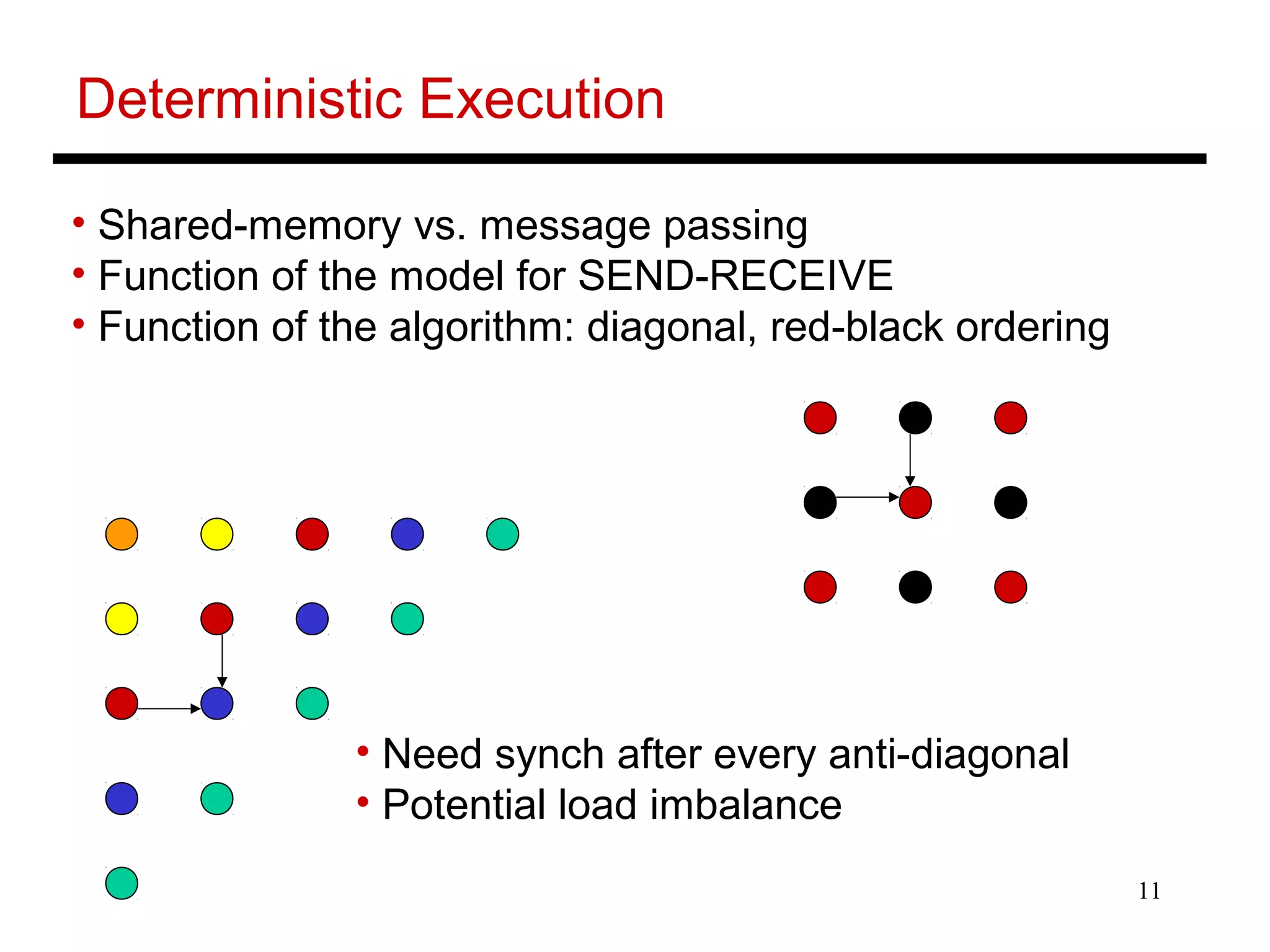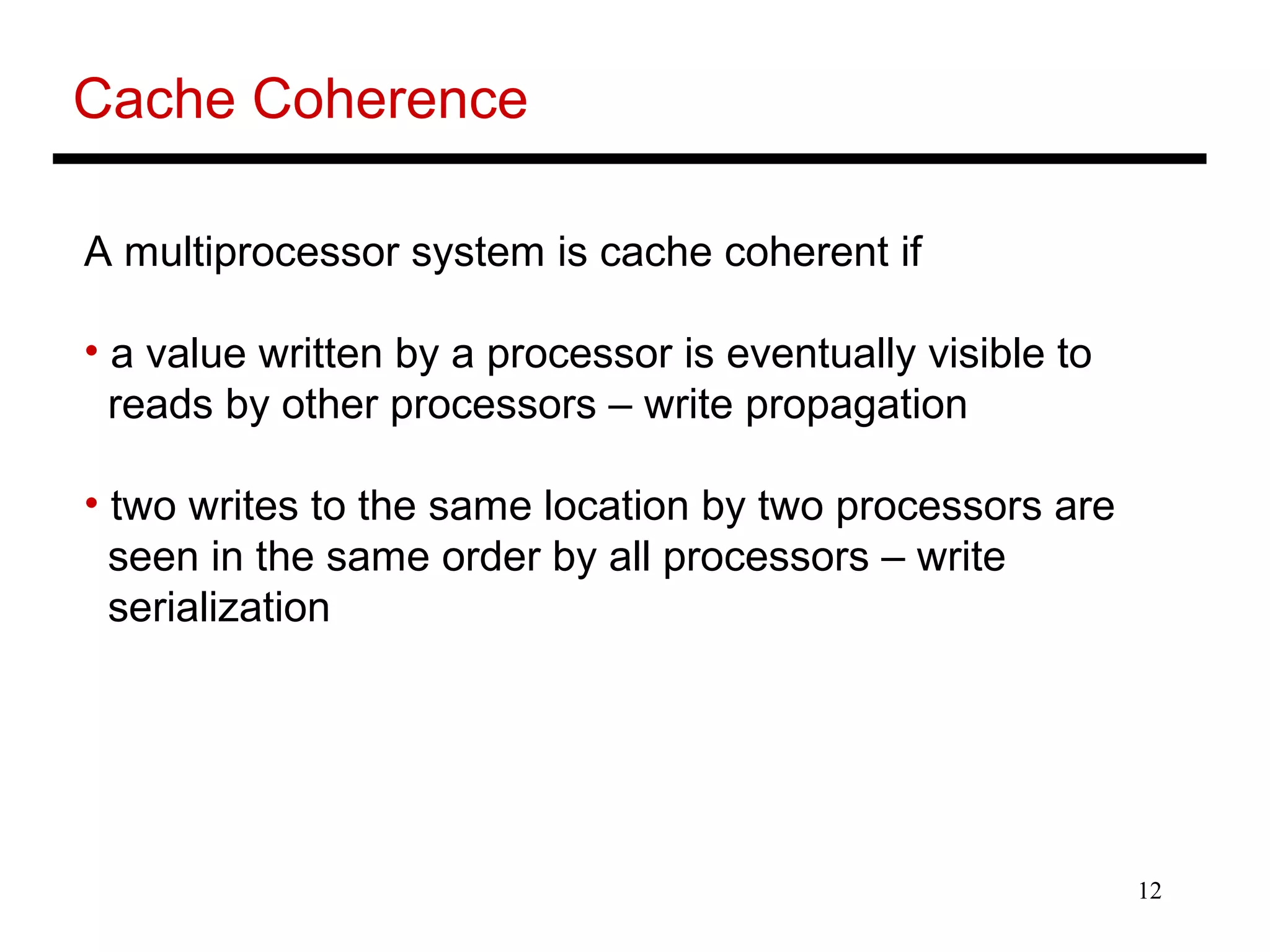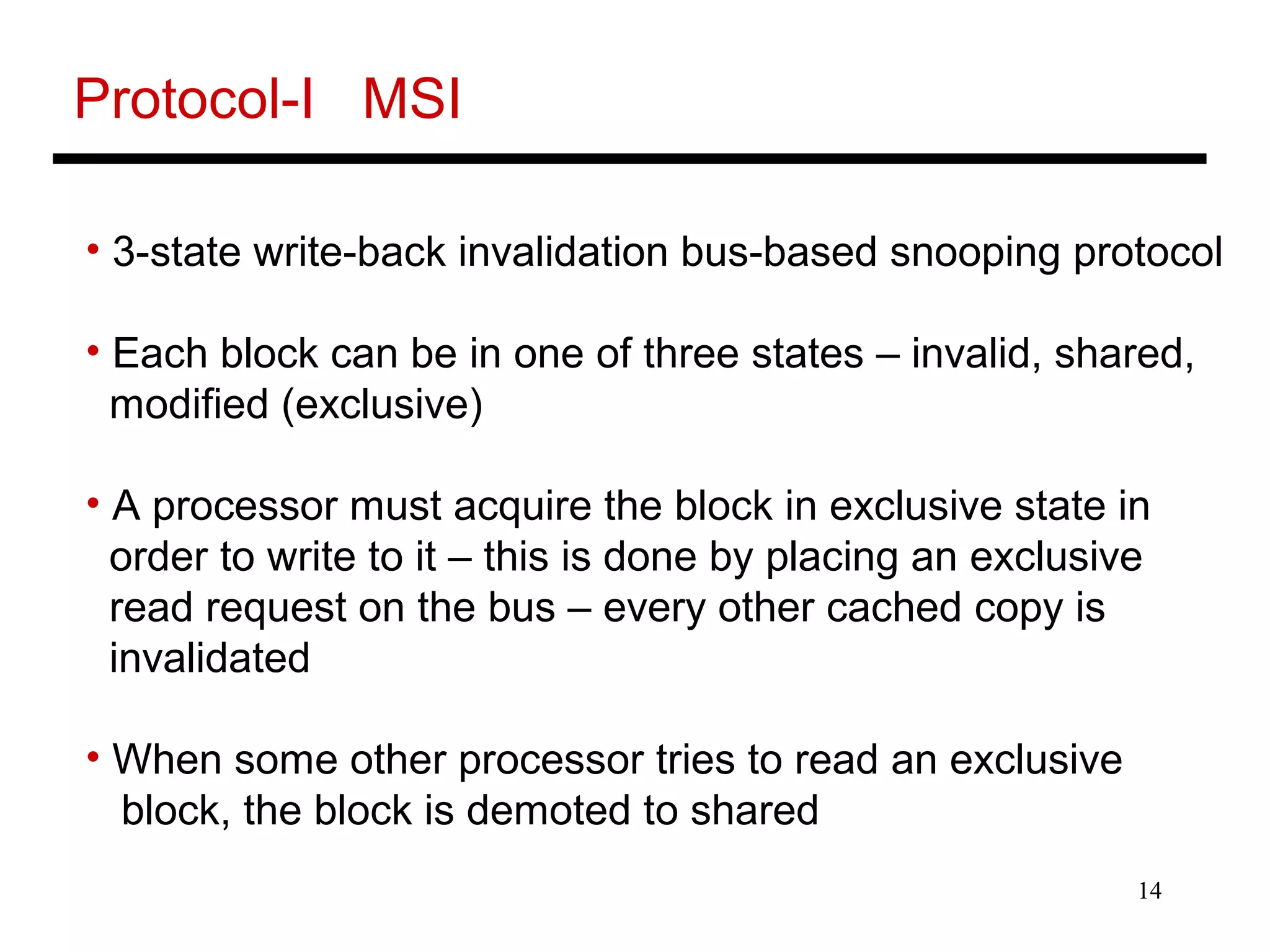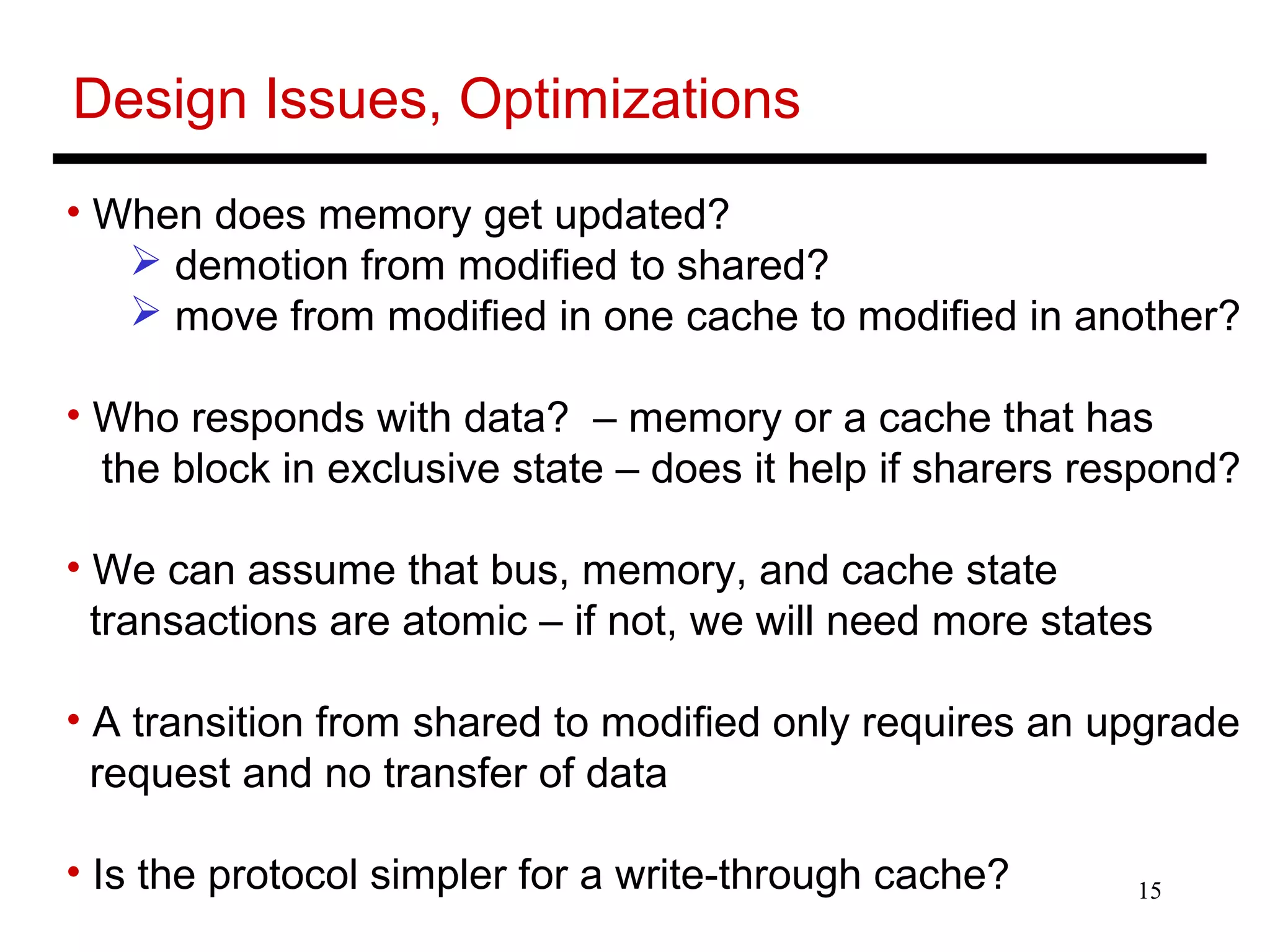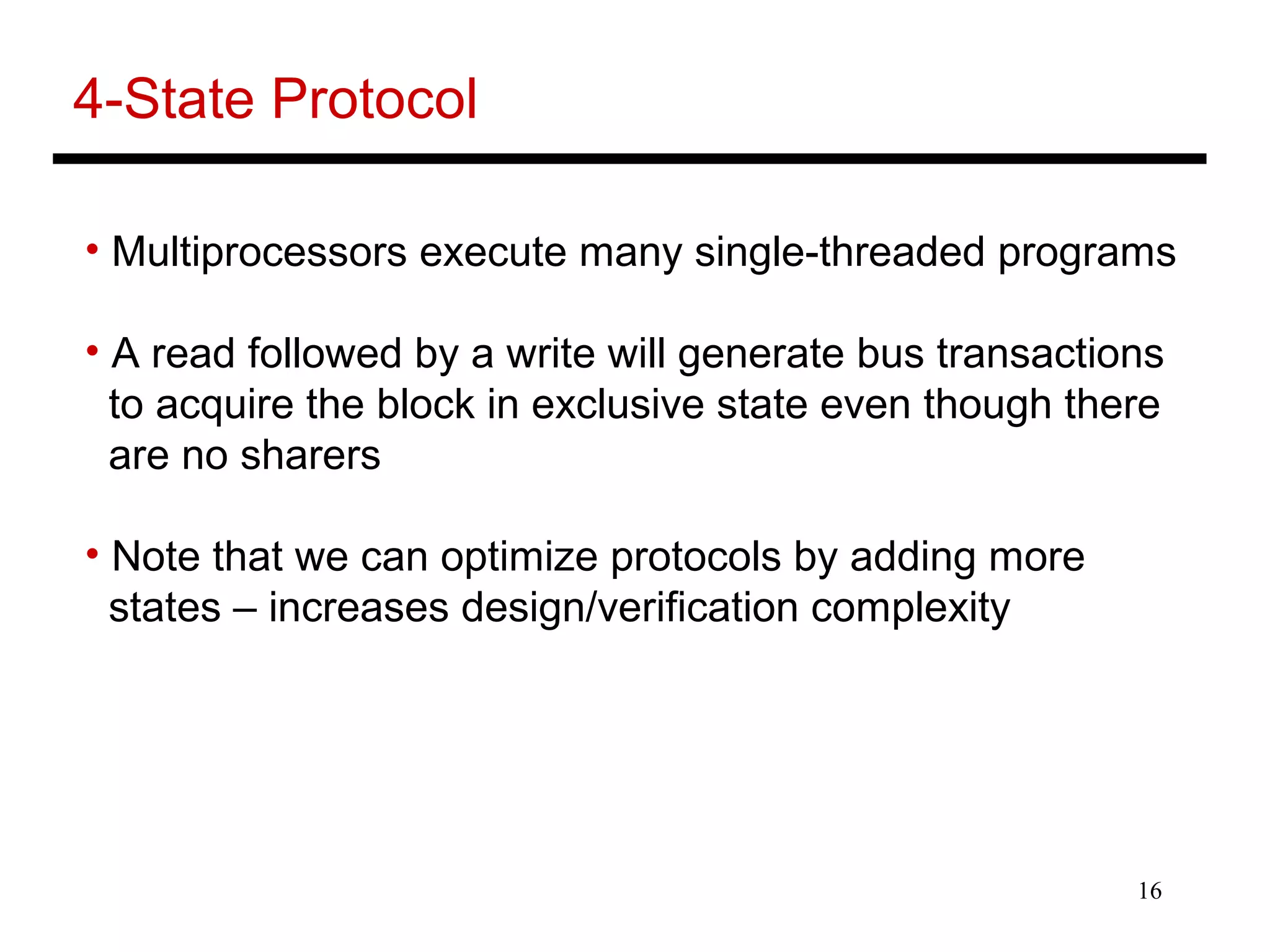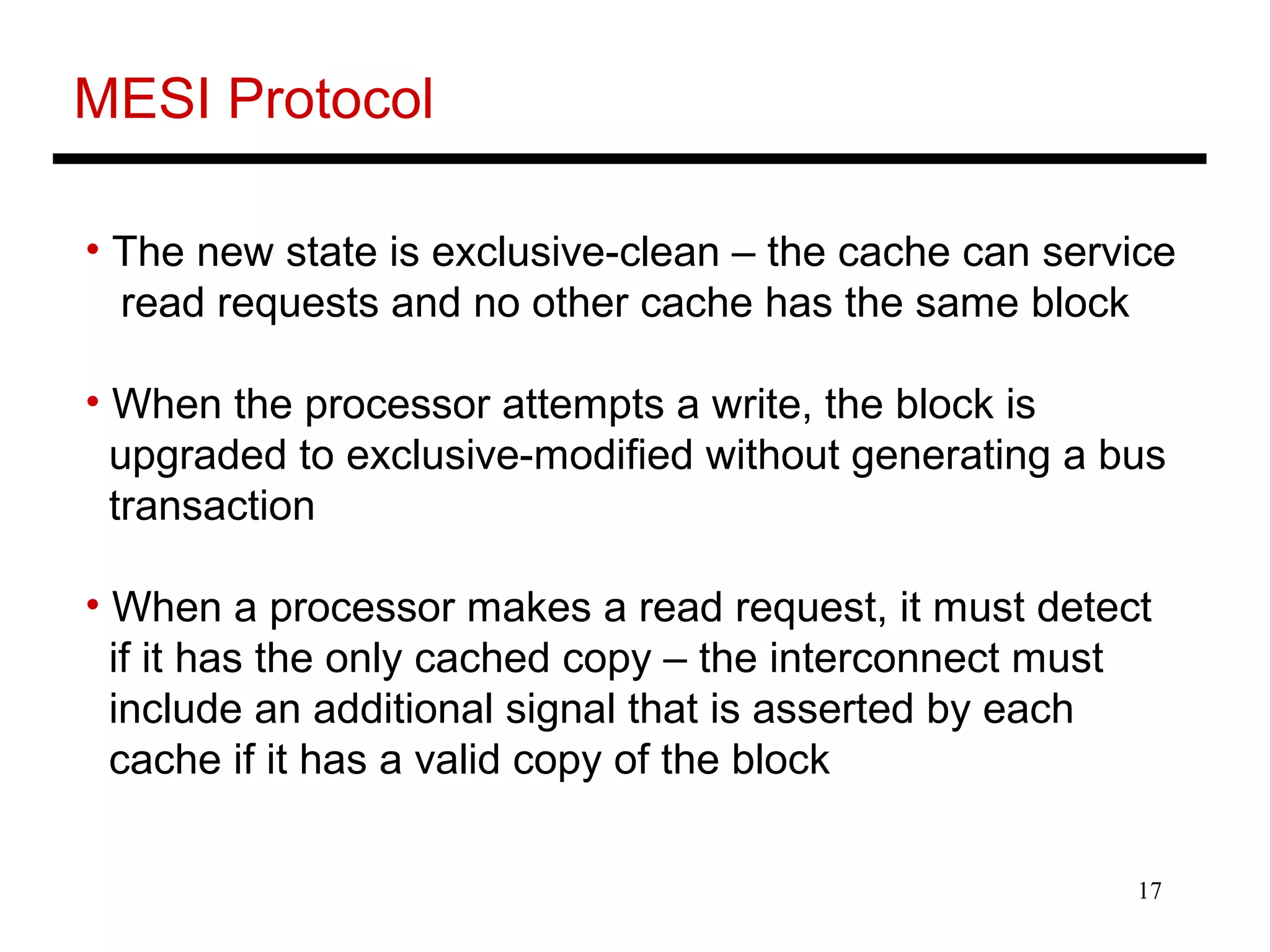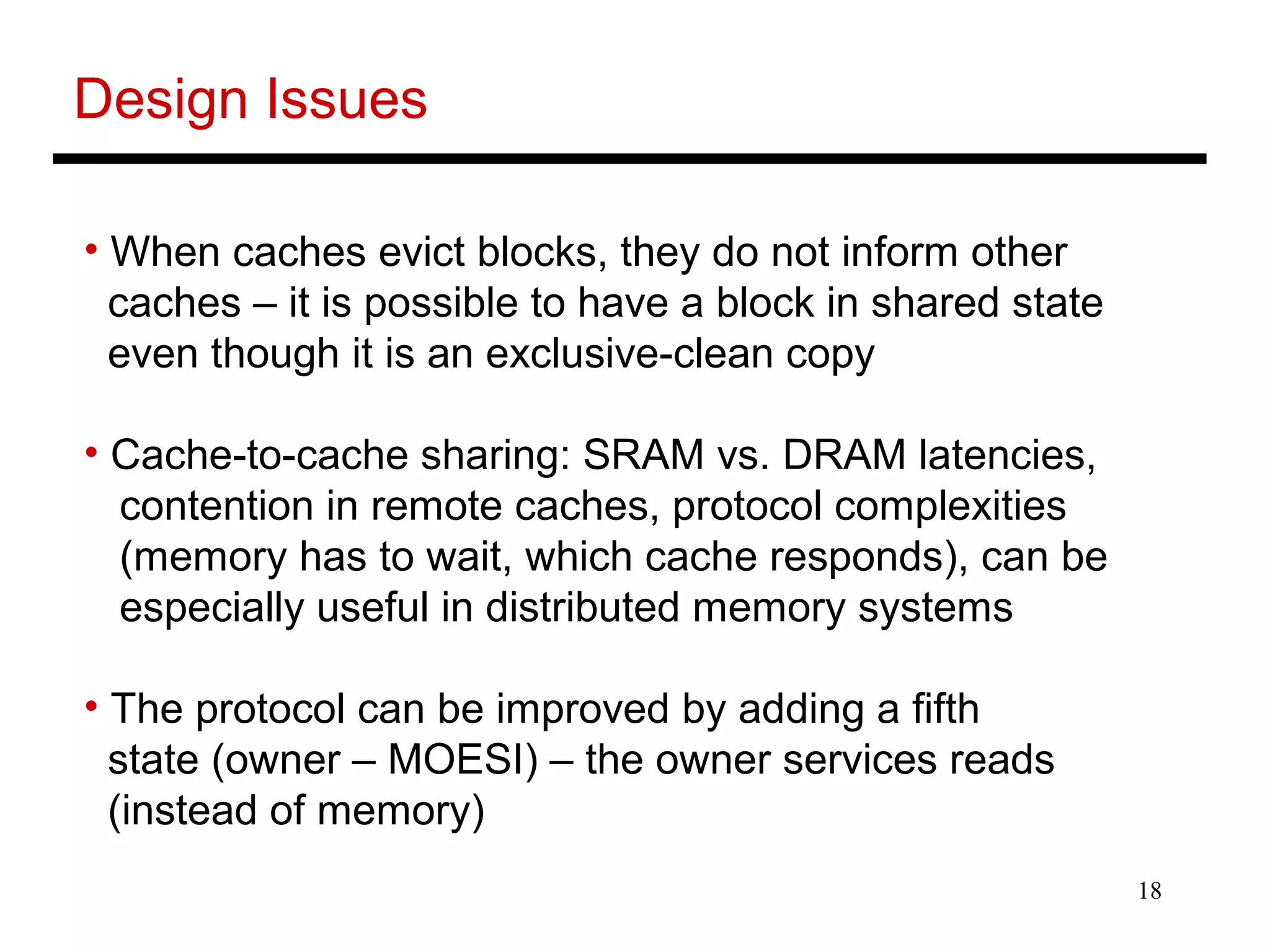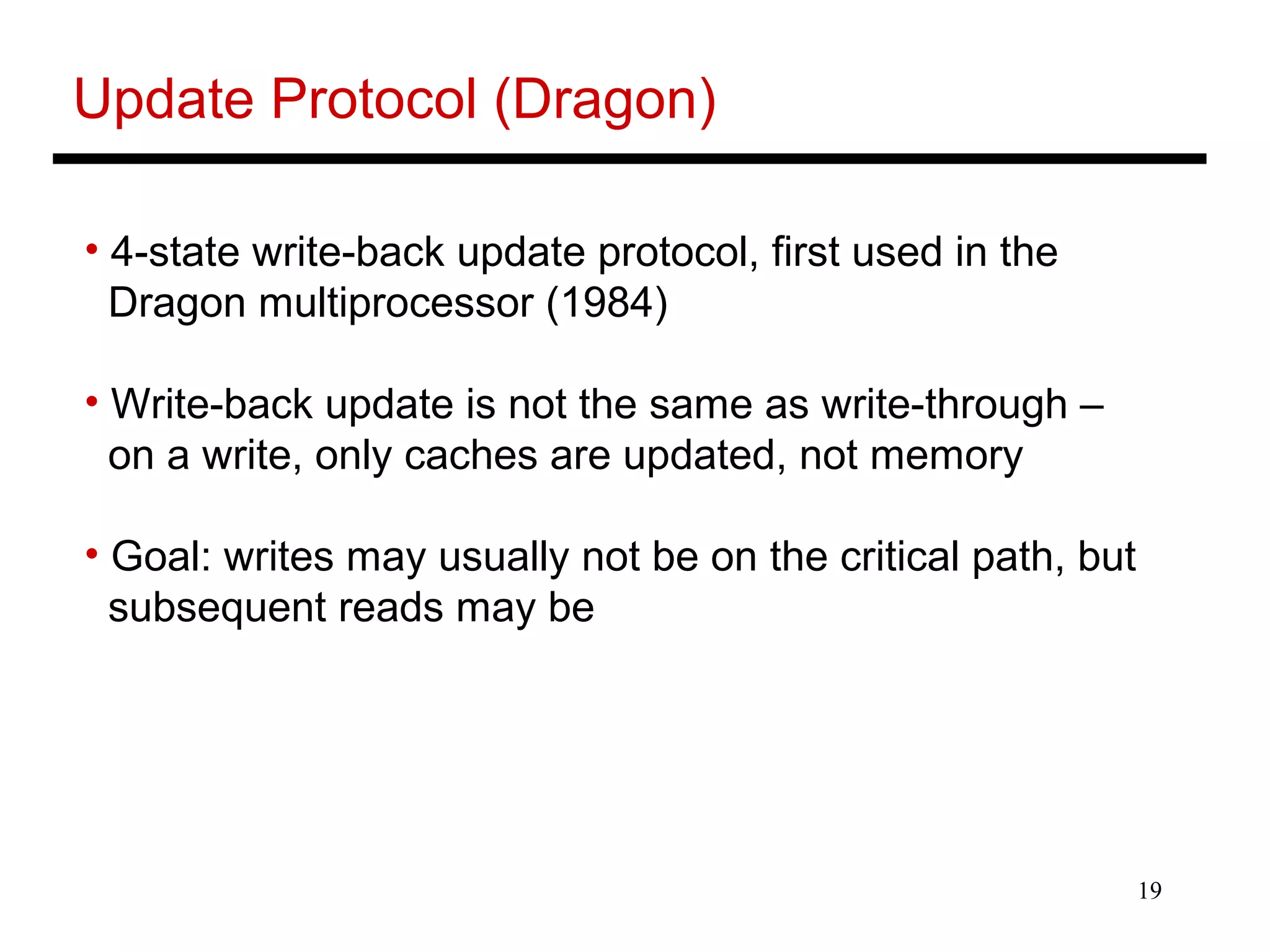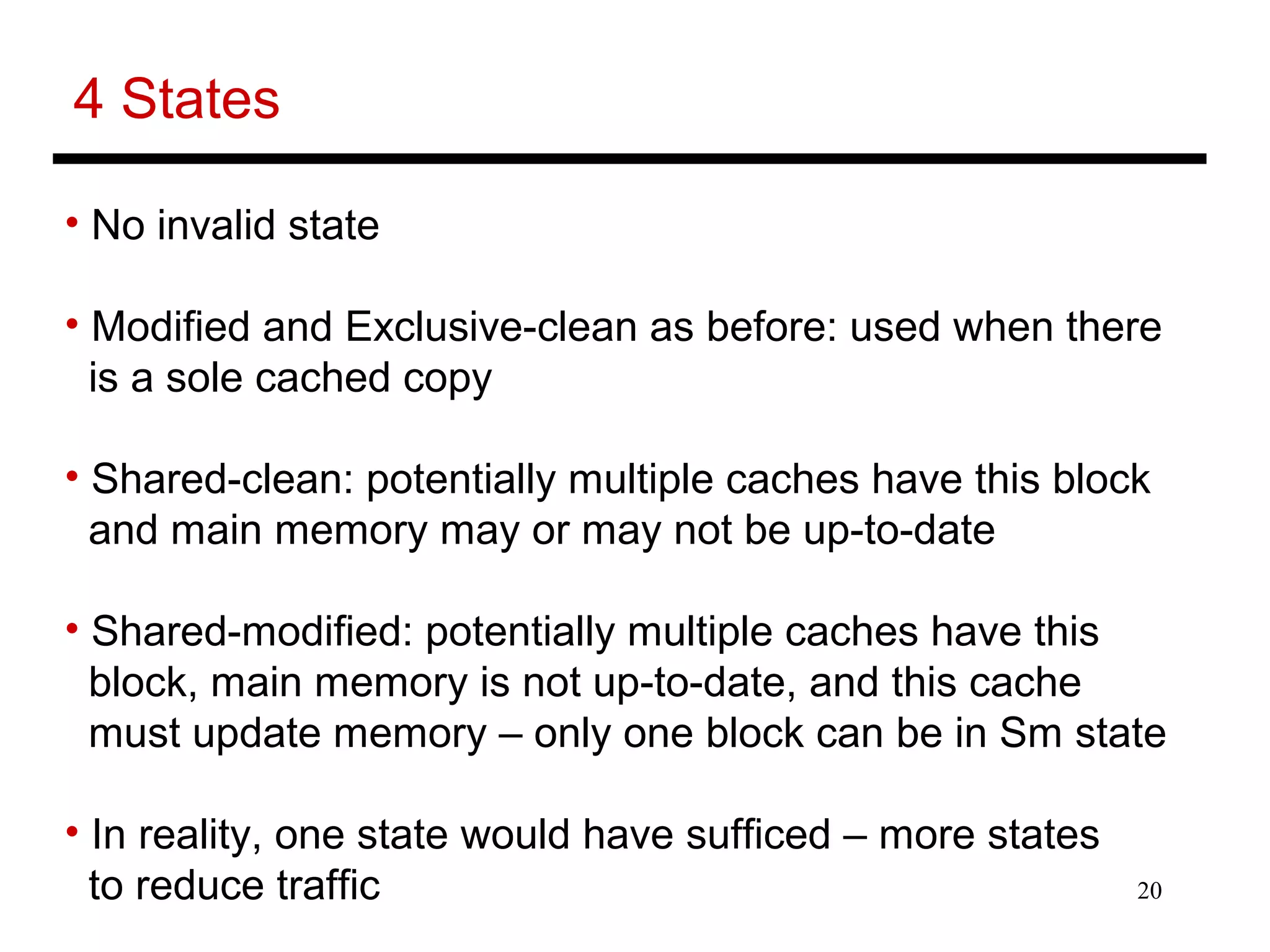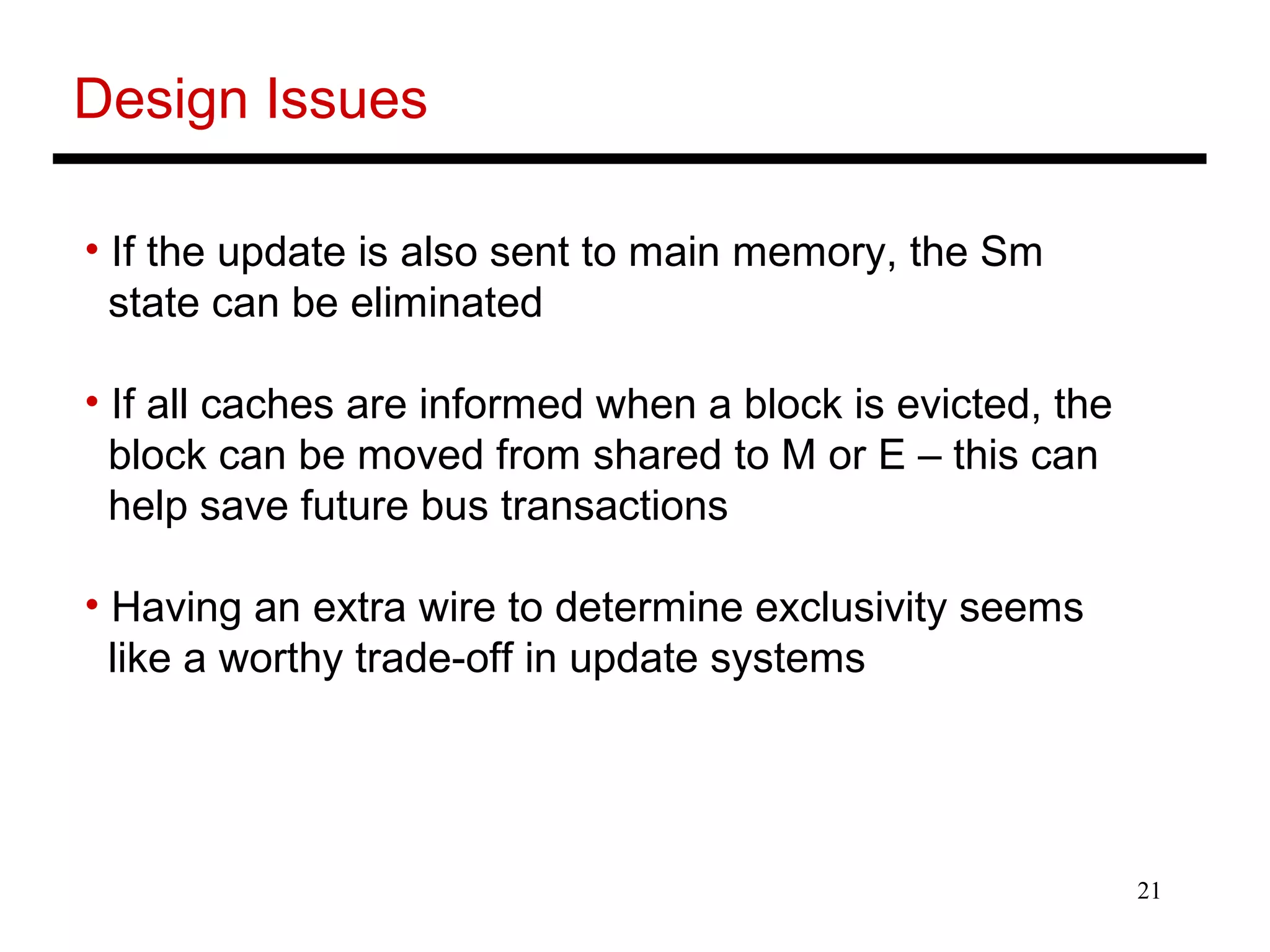The document discusses different cache coherence protocols used in multi-core systems, including snooping-based and directory-based approaches. It describes the MSI protocol, a 3-state snooping protocol, and the MESI protocol, a 4-state optimization. It also covers the Dragon update protocol, a 4-state write-back update snooping approach, and compares the number of bus transactions required for different protocols and memory access patterns.
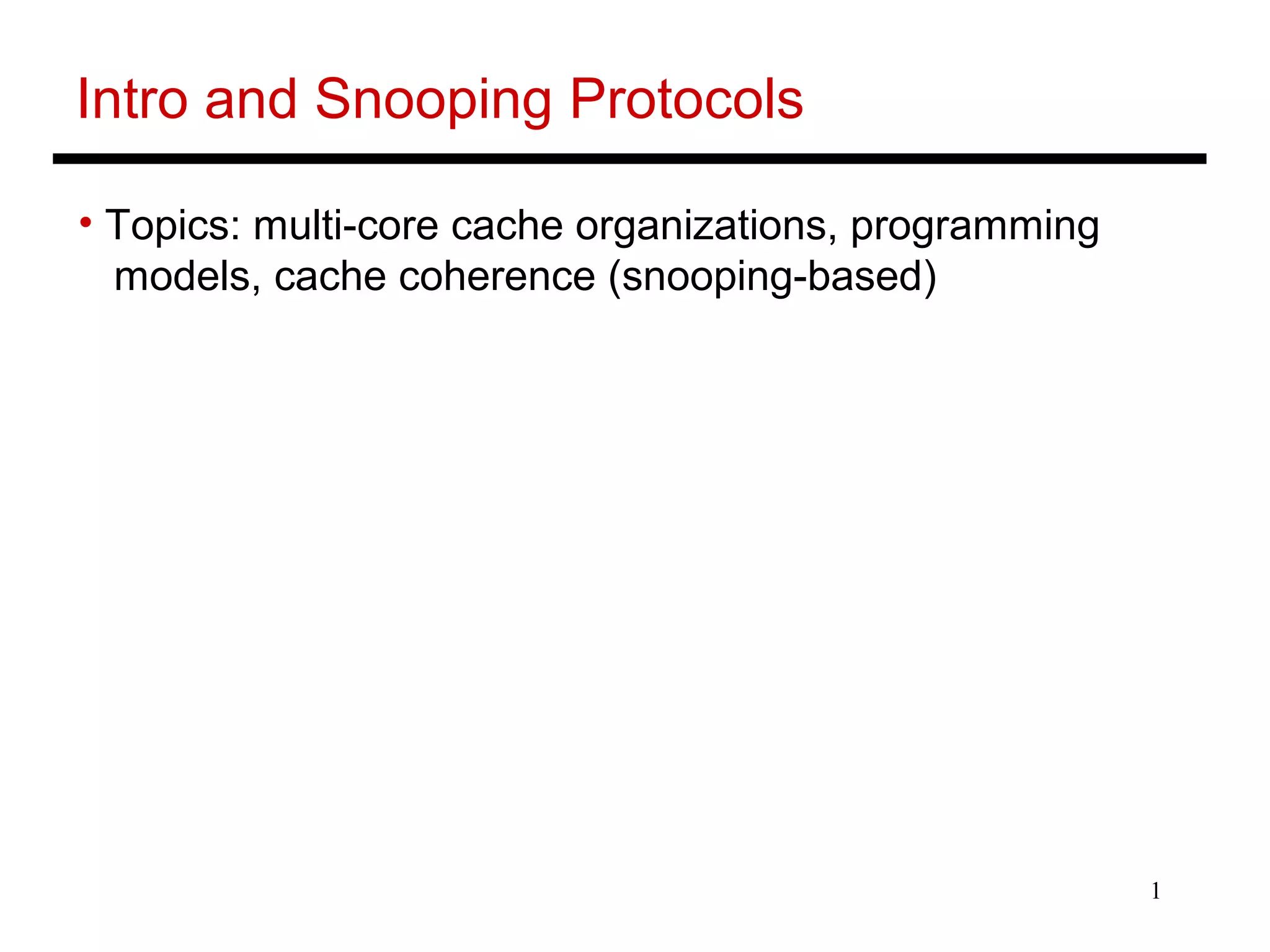

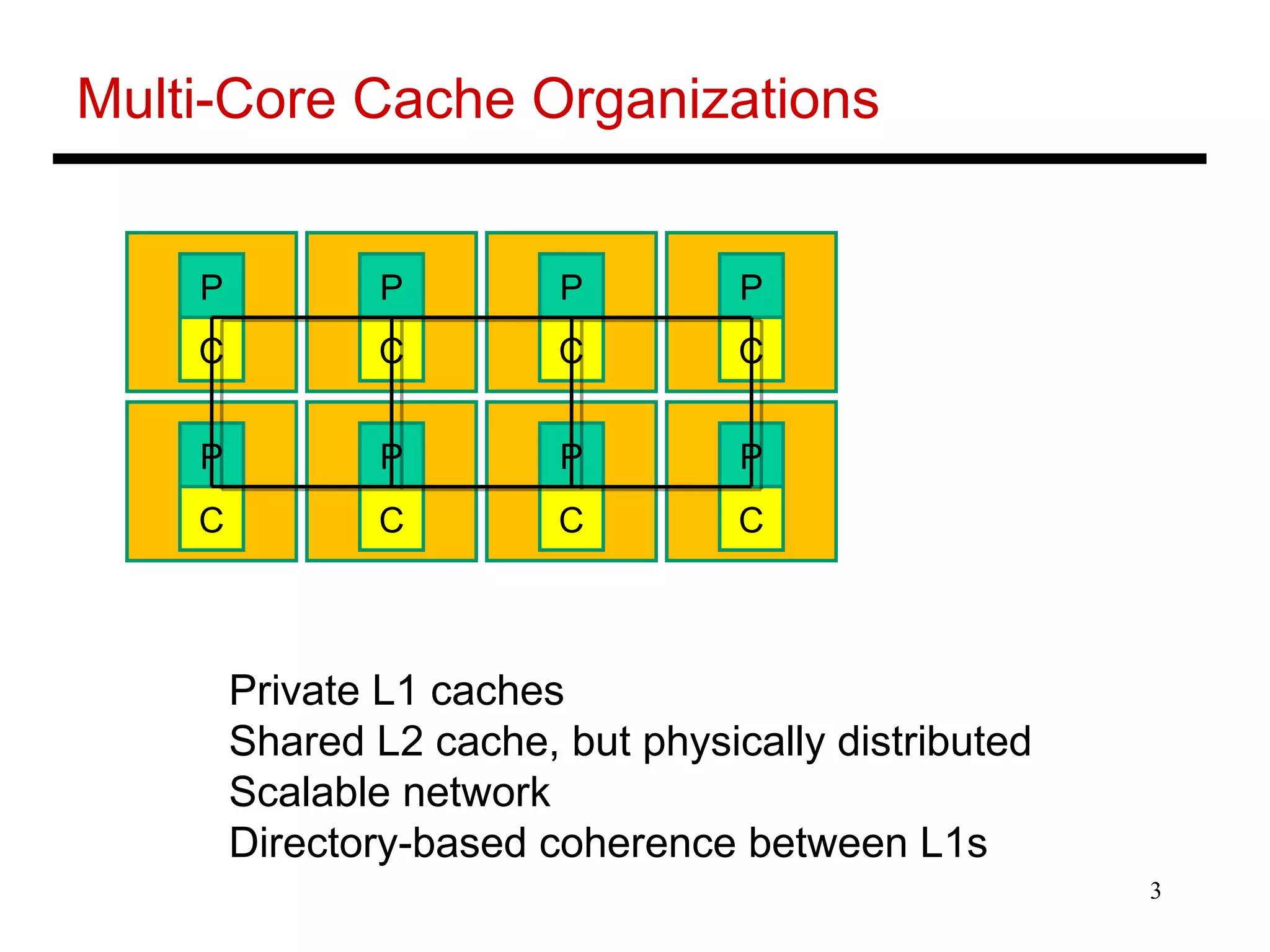

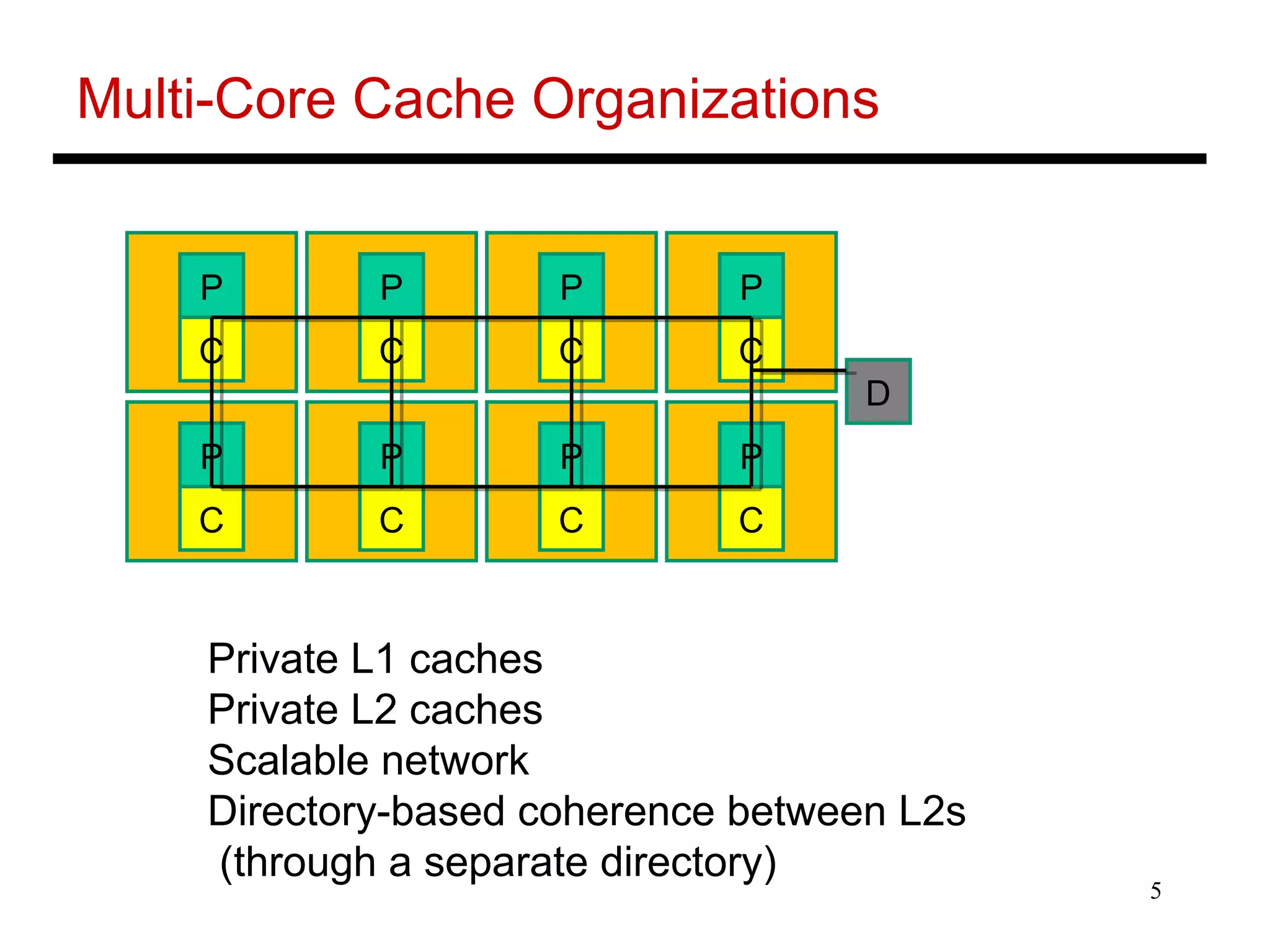

![7
Ocean Kernel
Procedure Solve(A)
begin
diff = done = 0;
while (!done) do
diff = 0;
for i 1 to n do
for j 1 to n do
temp = A[i,j];
A[i,j] 0.2 * (A[i,j] + neighbors);
diff += abs(A[i,j] – temp);
end for
end for
if (diff < TOL) then done = 1;
end while
end procedure](https://image.slidesharecdn.com/snooping2-141218125214-conversion-gate02/75/Snooping-2-7-2048.jpg)
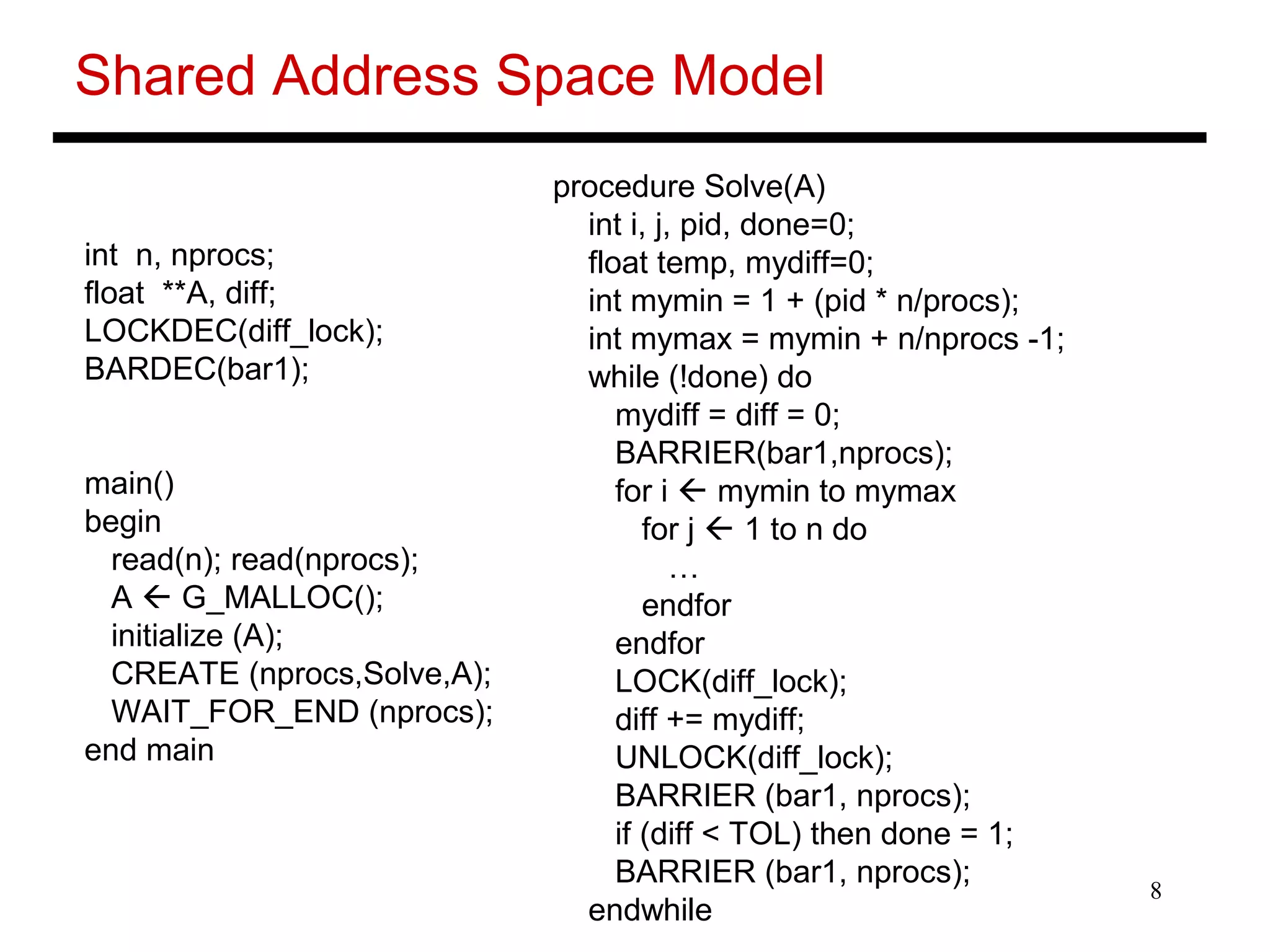
![9
Message Passing Model
main()
read(n); read(nprocs);
CREATE (nprocs-1, Solve);
Solve();
WAIT_FOR_END (nprocs-1);
procedure Solve()
int i, j, pid, nn = n/nprocs, done=0;
float temp, tempdiff, mydiff = 0;
myA malloc(…)
initialize(myA);
while (!done) do
mydiff = 0;
if (pid != 0)
SEND(&myA[1,0], n, pid-1, ROW);
if (pid != nprocs-1)
SEND(&myA[nn,0], n, pid+1, ROW);
if (pid != 0)
RECEIVE(&myA[0,0], n, pid-1, ROW);
if (pid != nprocs-1)
RECEIVE(&myA[nn+1,0], n, pid+1, ROW);
for i 1 to nn do
for j 1 to n do
…
endfor
endfor
if (pid != 0)
SEND(mydiff, 1, 0, DIFF);
RECEIVE(done, 1, 0, DONE);
else
for i 1 to nprocs-1 do
RECEIVE(tempdiff, 1, *, DIFF);
mydiff += tempdiff;
endfor
if (mydiff < TOL) done = 1;
for i 1 to nprocs-1 do
SEND(done, 1, I, DONE);
endfor
endif
endwhile](https://image.slidesharecdn.com/snooping2-141218125214-conversion-gate02/75/Snooping-2-9-2048.jpg)
